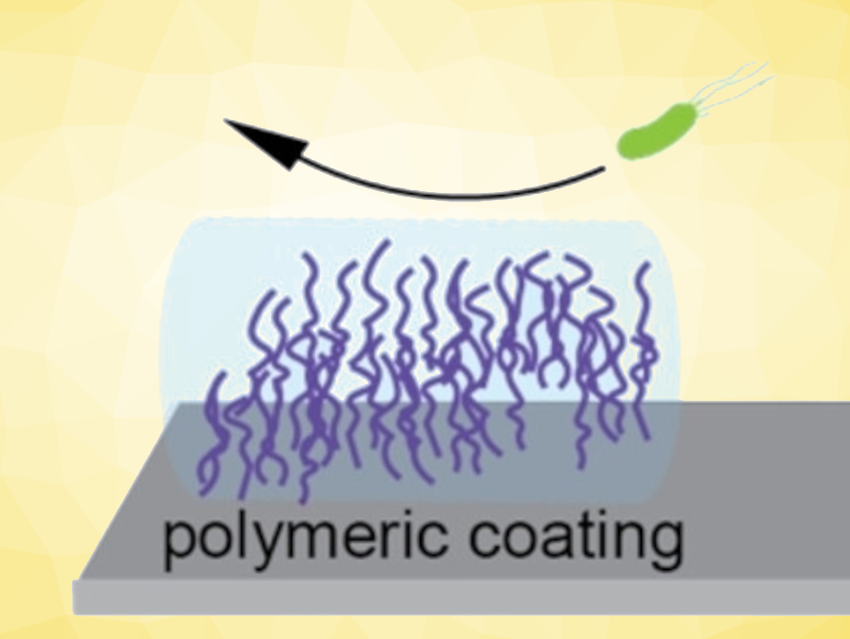Bacteria that gather into biofilms on the surfaces of implants, catheters, breathing tubes, and other medical components are a serious health hazard. Daniela A. Wilson, Kevin Neumann, Radboud University, Nijmegen, The Netherlands, and colleagues have introduced a new material based on poly(sulfur ylides) that, when applied as a coating, effectively inhibits this process known as fouling. The coating minimizes the adhesion of bacteria to surfaces and is also a bactericide while not affecting mammalian cells.
Biofilms Pose a Health Threat
Bacteria organized into biofilms are especially stubborn and often resistant to antibiotics. It is estimated that 65 % of infections acquired in hospitals originate from biofilms. The cause is frequently contamination with infectious bacteria from a patient’s skin or pathogens that circulate in the bloodstream. The first step is the adhesion of the bacteria to a surface.
To inhibit the formation of biofilms, exposed surfaces are given antifouling coatings, usually made of polyethylene glycol (PEG). PEG binds to water molecules, which then form a hydration layer—an effective barrier against the undesired adsorption of biomolecules and bacterial cells. However, PEG also has disadvantages in that it seems to trigger immune responses.
Zwitterions as an Alternative
An alternative solution is offered by polybetaines, a class of zwitterionic polymers. A zwitterion is a molecule that carries both positive and negative charges. It has been found that the antifouling performance increases as the distance between the positive and negative charges becomes smaller.
The most effective of these substances, thus, should have the negatively charged atoms directly adjacent to the positively charged ones—a requirement that cannot be met with a conventional betaine structure. However, this is precisely the unique structural feature of ylides. For example, in a sulfur ylide, a positively charged sulfur ion is bound directly to a negatively charged carbon atom.
Polymeric Sulfur Ylides with Minimal Charge Separation
The team produced zwitterionic polymers based on sulfur ylides, i.e., a poly(sulfur ylides)—abbreviated as P(SY)—which feature sulfur ylides as side chains on a backbone made of polystyrene. The polymers were synthesized from the corresponding ylide monomers via reversible addition-fragmentation chain-transfer (RAFT) polymerization.
The team showed that the new polymers have antifouling properties exceeding those of PEG. This seems to be the result of a synergistic effect. Like PEG, P(SY) produces a hydration layer that inhibits the adhesion of bacteria and biomolecules.

Unlike PEG, P(SY) also reduces the viability of bacteria that overcome the barrier of the hydration layer. Presumably, these bacteria initially bind to the ylide groups through electrostatic attractions. Once they come into contact with the hydrophobic polystyrene backbone, their cell membranes become porous, and the bacterial cells die off. Mammalian cells, in contrast, are not affected by P(SY).
According to the researchers, this is the first report on the antifouling properties of poly(sulfur ylides). The work could inspire the development of a range of ylide-based materials with antifouling properties.
- Zwitterionic Polymeric Sulfur Ylides with Minimal Charge Separation Open a New Generation of Antifouling and Bactericidal Materials,
Bela B. Berking, Georgia Poulladofonou, Dimitrios Karagrigoriou, Daniela A. Wilson, Kevin Neumann,
Angew. Chem. Int. Ed. 2023.
https://doi.org/10.1002/anie.202308971



